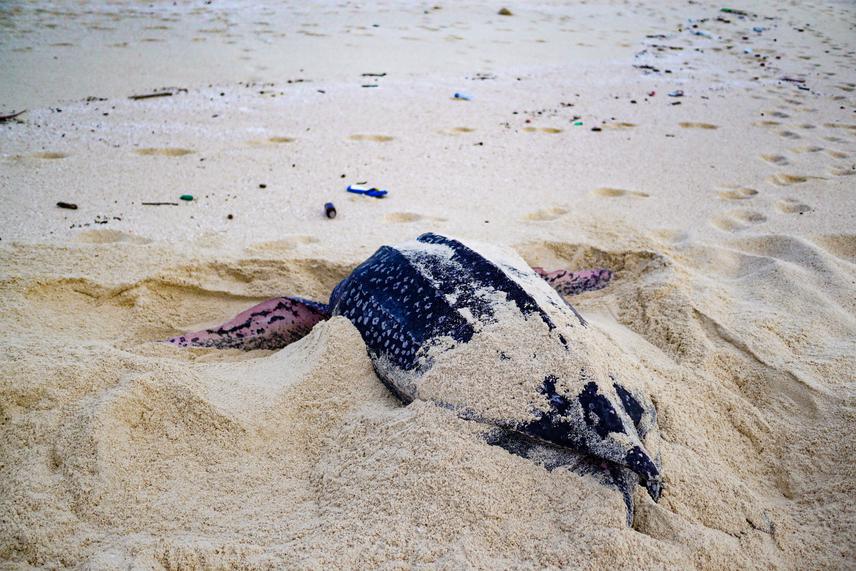Luke Swainson
HAkA’s turtle conservation program aims to protect, study and increase awareness of Bangkaru Island’s biological diversity, especially the sea turtles that lay eggs on the island.

Leatherback turtle.
Bangkaru Island is in the district of Singkil, Aceh Province, Sumatra and is home to a variety of unique marine and terrestrial flora and fauna. The island is the most prolific turtle nesting site in Sumatra and averages 100 in situ nests per month. However, if left unprotected there is a constant threat of poachers who want to harvest the eggs for profit. Continued marine turtle decline in the region will result in negative environmental, economic and cultural consequences, and will reduce the opportunities associated with sustainable tourism.
HAkA manages Bangkaru Island as a protected area in collaboration with the government of Indonesia. Its conservation program aims to protect, study and increase awareness of Bangkaru Island’s biological diversity and habitats, including the pristine beaches, mangroves, coral reefs, sea grass meadows and primary forest it contains.
Through the presence of rangers on Bangkaru Island the number of turtle eggs being poached has decreased dramatically. However, HAkA understands that long term conservation success relies on the support of local communities. An integrated sea turtle conservation, eco-tourism and volunteerism programme supports local livelihoods by creating jobs and generating direct economic opportunities. These opportunities include the provision of board, food and services to visiting tourists, scientists, and volunteers. These benefits establish a positive feedback mechanism between poverty alleviation and improved environmental management. In addition, the integrated nature of the program creates the space for communities to be directly involved in conservation activities thus providing them with a better understanding and appreciation of why better environmental management is imperative and how it can be achieved.